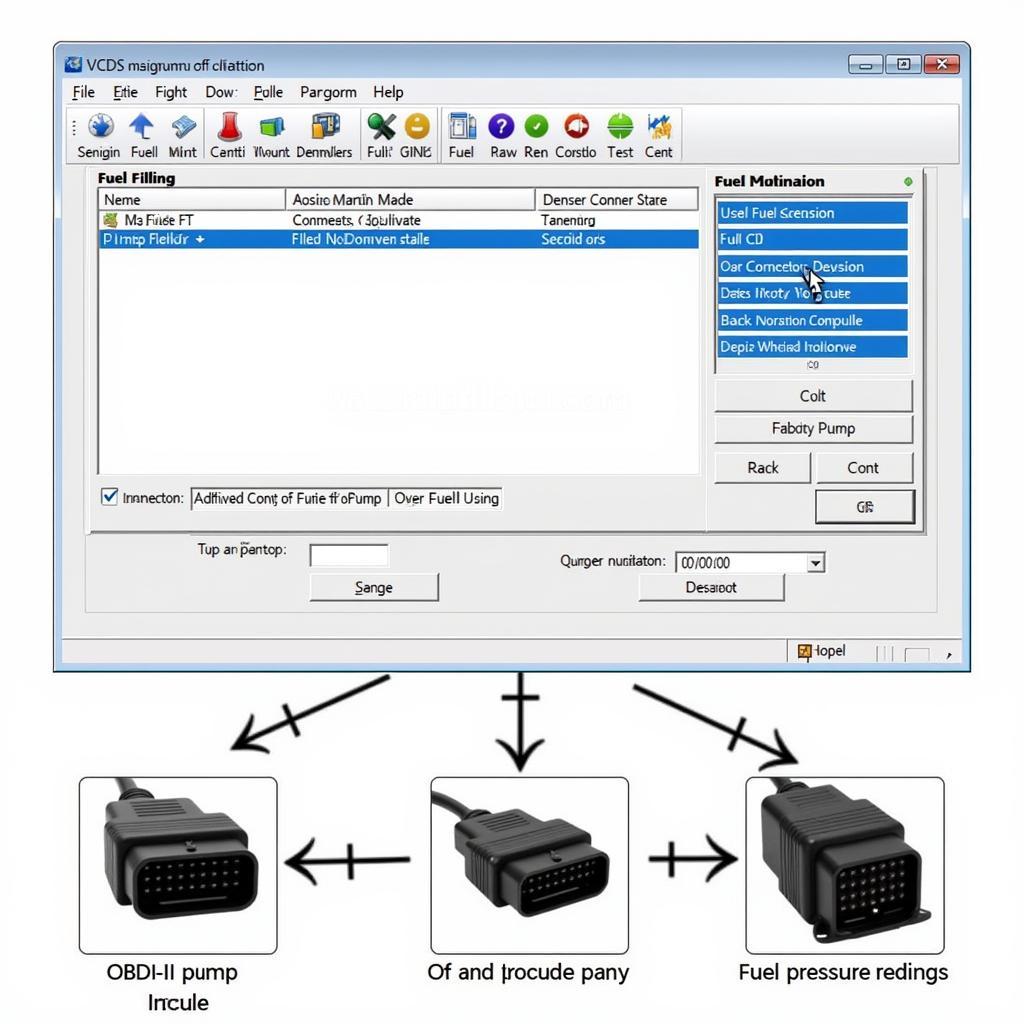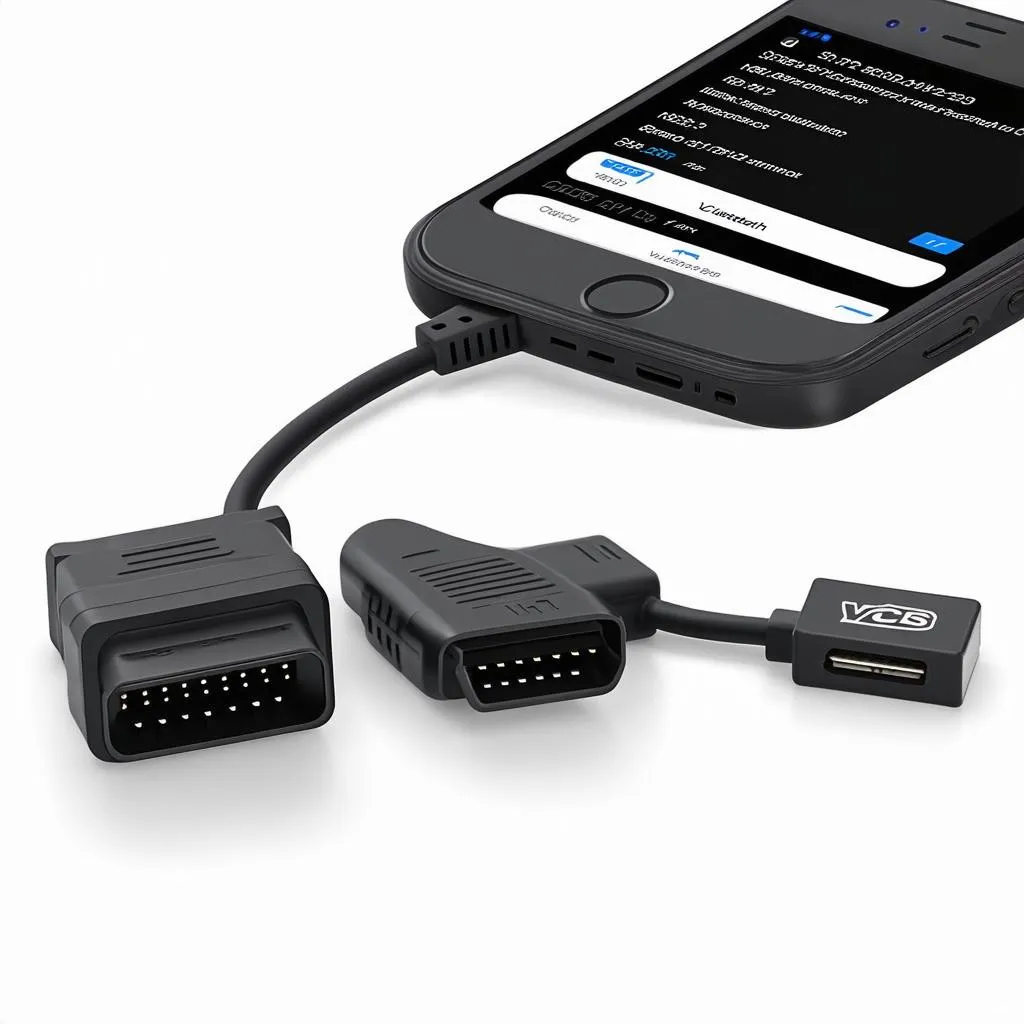Initial fuel filling with VCDS can seem daunting, but with the right knowledge, it’s a straightforward process. This guide provides a detailed walkthrough of the procedure, common issues, and troubleshooting tips for automotive technicians and car owners alike. We’ll cover everything from understanding the basics to advanced techniques, ensuring you can perform this crucial task effectively and efficiently.
Understanding the Importance of Initial Fuel Filling with VCDS
vcds initial fuel filling is essential after certain repairs or component replacements in modern vehicles, particularly those with diesel engines. This procedure ensures the fuel system is properly primed and prevents potential damage to critical components. Without correct initial fuel filling, air pockets can form in the fuel lines, leading to starting issues, rough idling, or even complete engine failure. Therefore, understanding this process is crucial for maintaining vehicle performance and longevity. Contact Here for Free Video Tutorial.
Step-by-Step Guide to VCDS Initial Fuel Filling
The process of initial fuel filling using VCDS varies slightly depending on the vehicle’s make and model. However, the general steps remain consistent. Here’s a comprehensive guide to help you navigate the process:
- Connect VCDS: Connect your VCDS interface to the vehicle’s OBD-II port and launch the software on your computer.
- Select Control Module: Select the correct control module for your vehicle’s engine. This is typically labeled “Engine” or a similar designation.
- Access Basic Settings: Navigate to the “Basic Settings” function within the selected control module.
- Initiate Fuel Filling: Locate the specific function for initial fuel filling. This might be labeled “Fuel Pump Activation,” “Initial Fueling,” or similar.
- Follow On-Screen Prompts: The VCDS software will guide you through the remaining steps. This usually involves turning the ignition on (without starting the engine) and activating the fuel pump for a specified duration.
- Monitor Fuel Pressure: Observe the fuel pressure readings within VCDS to ensure the system is priming correctly.
- Clear Fault Codes: After successful initial fuel filling, clear any fault codes related to the fuel system.
 VCDS Initial Fuel Filling Process
VCDS Initial Fuel Filling Process
Common Issues and Troubleshooting
While the process is generally straightforward, some issues might arise during VCDS initial fuel filling. Here are some common problems and their solutions:
- No Fuel Pressure Increase: This could indicate a faulty fuel pump, clogged fuel filter, or a leak in the fuel lines. Check these components thoroughly and replace any defective parts.
- VCDS Communication Errors: Ensure the VCDS interface is properly connected and the correct drivers are installed on your computer.
- Incorrect Control Module Selection: Double-check that you have selected the correct control module for your vehicle’s engine.
Why is My VCDS Not Communicating?
If your VCDS is not communicating, it could be due to a faulty cable, incorrect driver installation, or an issue with the vehicle’s OBD-II port. Try using a different cable or reinstalling the drivers.
How Long Should the Fuel Pump Run During Initial Filling?
The duration varies depending on the vehicle, but it typically ranges from 30 seconds to a minute. Consult your vehicle’s service manual or the VCDS documentation for specific instructions.
Expert Insights
John Smith, a certified automotive technician with over 20 years of experience, emphasizes the importance of precision in this process: “Initial fuel filling is not a task to be taken lightly. Following the correct procedure and using the right tools, like VCDS, is crucial for preventing costly repairs down the road.”
Similarly, Maria Garcia, a senior diagnostics specialist, adds, “Paying attention to detail is key. Monitoring fuel pressure readings during the process can help identify potential issues early on, saving you time and frustration.”
Conclusion
Initial fuel filling with VCDS is a vital procedure for maintaining the health of your vehicle’s fuel system. By following the steps outlined in this guide and addressing potential issues proactively, you can ensure optimal performance and avoid future problems. Remember to consult your vehicle’s service manual or contact a qualified technician if you encounter any difficulties. Properly executing vcds initial fuel filling will contribute significantly to the long-term reliability and efficiency of your vehicle.
FAQs
- What is VCDS? VCDS is a diagnostic software used to communicate with Volkswagen, Audi, Seat, and Skoda vehicles.
- Why is initial fuel filling necessary? It removes air from the fuel lines after repairs or component replacements.
- Can I perform this procedure without VCDS? While possible with some vehicles, using VCDS provides more control and accuracy.
- What are the risks of incorrect initial fuel filling? Incorrect procedures can lead to starting issues, rough idling, and potential engine damage.
- Where can I find more information on VCDS? The official Ross-Tech website is a great resource for VCDS information.
- What if I still have issues after following this guide? Consult a qualified automotive technician for further assistance.
- How often should initial fuel filling be performed? Only after specific repairs or component replacements related to the fuel system.
Situations where initial fuel filling questions arise
- After replacing a fuel pump
- After replacing a fuel filter
- After working on fuel lines
- After any service that might introduce air into the fuel system
Related Articles and Questions
- VCDS Diagnostic Procedures
- Fuel System Maintenance
- Understanding Fuel Pressure
For any support, please contact us via Whatsapp: +1 (641) 206-8880, Email: [email protected] Or visit us at: 276 Reock St, City of Orange, NJ 07050, United States. We have a 24/7 customer support team.


